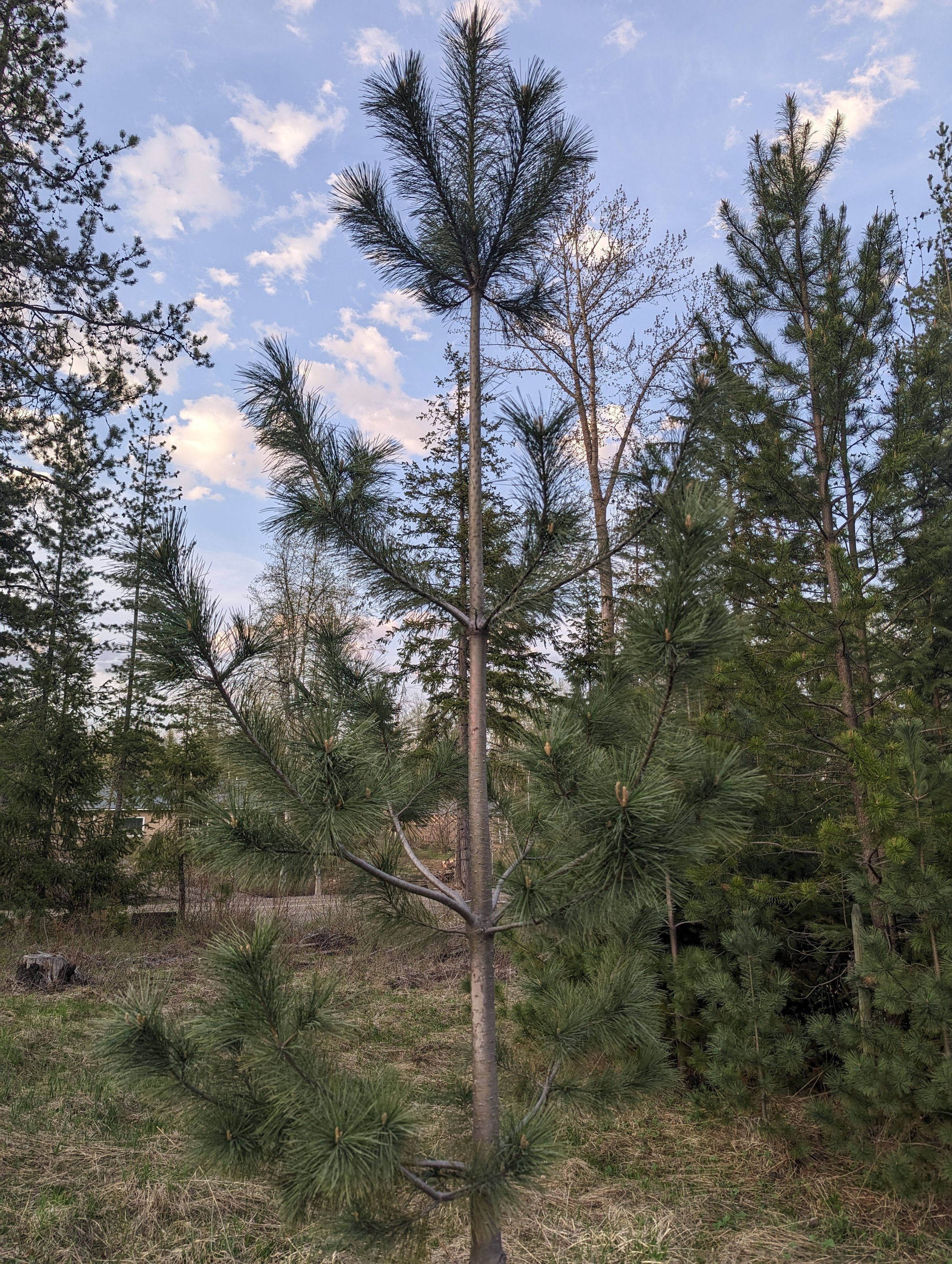Idaho Pine
I had a chance to plant some of my favorite trees over the last couple weeks, the western white pine, Pinus monticola. Why is it my favorite? White pine is versatile, fast growing, beautiful, and it’s fun to teach kids how to age a white pine by counting the annual growth whorls. It’s also the State tree of Idaho and is sometimes referred to as the Idaho pine as a testament to it’s importance in our State’s history.
Western white pine was probably one of the single biggest drivers of settlement in Northern Idaho and Western Montana. The big timber corporations had logged most of the eastern white pine (a close cousin to our local species) in the upper Midwest shortly after the Civil War. The nation was looking for a new supply of white pine and they found it in the fertile, ashy mountain soils of the Idaho Panhandle. The old growth white pine stands early loggers found were tall, “gun barrel” straight, and clear grained as it self prunes naturally in dense stands. White pine can attain heights over 200’ (The Idaho Champion Tree was 229’!) and 6+’ diameter. White pine was used from everything from ships masts to match sticks. I love the clear white wood so much I even floored my old house in it.
Unfortunately in 1909, white pine blister rust was introduced into western forests likely from imported European seedlings. This devastated white pine populations all across the West and land managers at the time felt the best course of action was to harvest as much of the species before it succumbed to the disease. This had another unfortunate consequence. White pine has incredible genetic diversity and some trees are largely unaffected by the rust. Much of this genetic diversity was lost to the crosscut saw. Today, due to efforts by the US Forest Service and public/private partnerships we have sources for blister rust resistant seedlings. These were bred by collecting seed from resistant blister rust trees and planting these seedlings in a common nursery initially and then the offspring of those trees were planted in a new nursery creating an F2 generation that has high resistance to blister rust.
How can you help? Plant, prune, and protect white pine. Plant blister rust resistant white pine on your property to promote blister rust resistant genes in your local gene pool. As a general rule if you have hemlock or cedar in your stand your soils will support western white pine. I try to include it in every planting mix I prescribe to support this species reestablishment across its native range. Prune white pine up to 8’ in height. Blister rust enters the tree through the needles and inoculation of the rust requires a certain relative humidity typically found closer to the ground so, pruning up to 8’ can help break the disease cycle. Protect white pine by “ghosting” them while thinning. Treat white pine as though they weren’t there when thinning your forest and preserve as many as possible during pre-commercial thinning. If you’re interested in white pine conservation and need some help getting started give us a call. We can work with you to develop a plan to preserve this important part of our local ecosystem.



